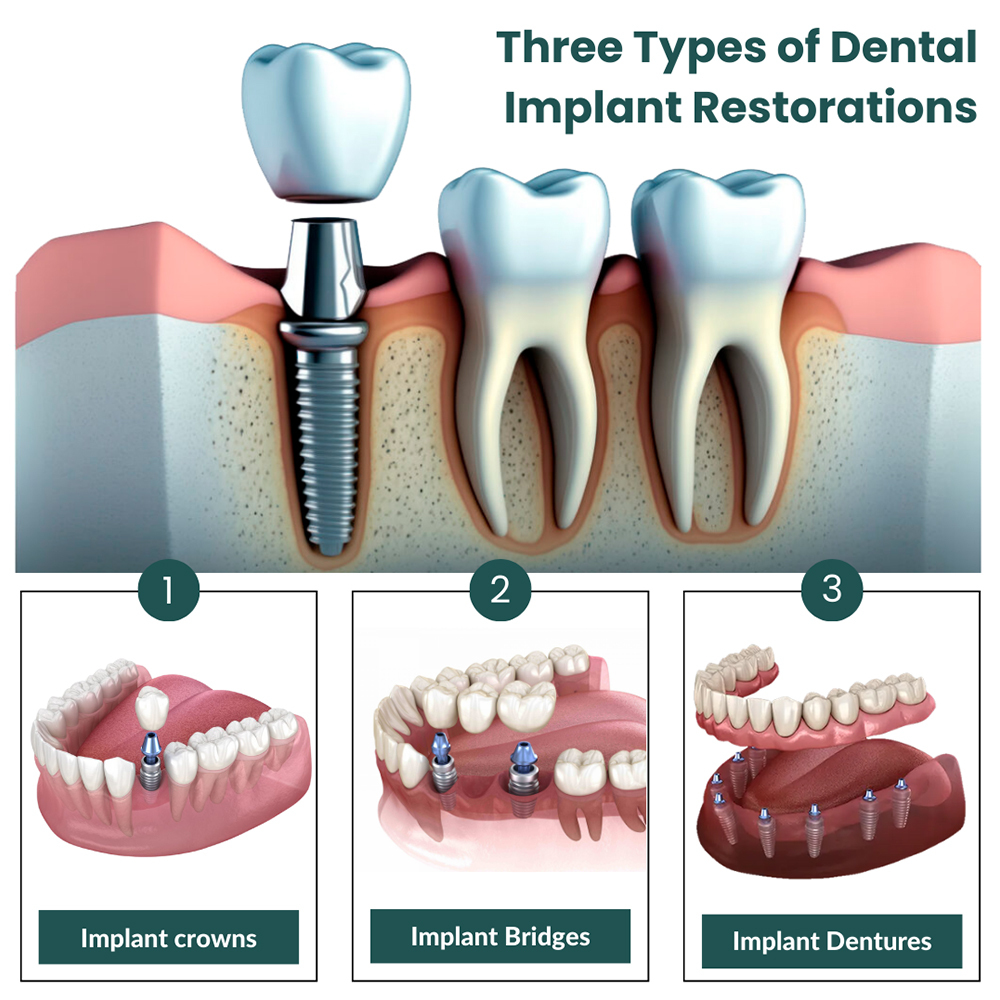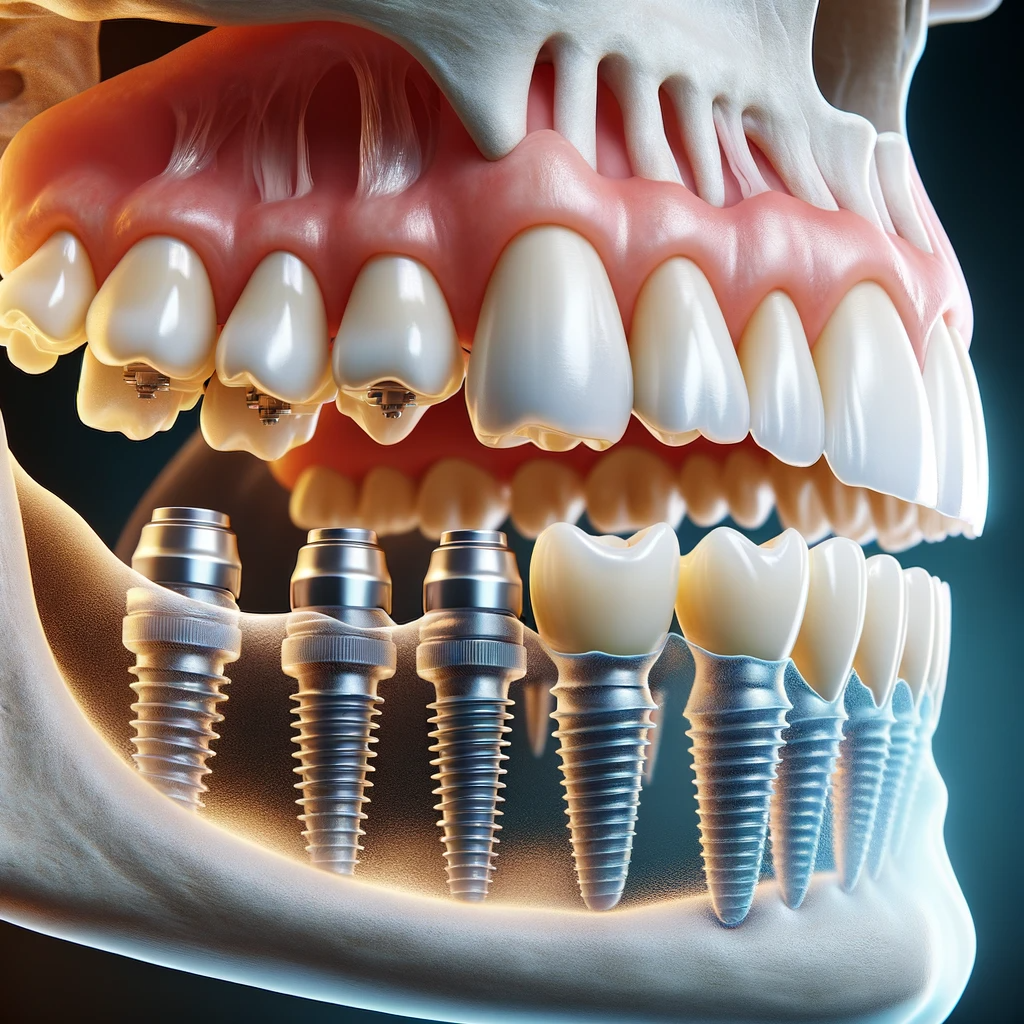Not known Factual Statements About Dental Sense
Not known Factual Statements About Dental Sense
Blog Article
The Greatest Guide To Dental Sense
Table of Contents8 Simple Techniques For Dental SenseDental Sense for BeginnersThe 7-Second Trick For Dental SenseTop Guidelines Of Dental Sense
are clinical devices surgically implanted right into the jaw to bring back a person's ability to chew or their appearance. They offer assistance for artificial (phony) teeth, such as crowns, bridges, or dentures. When a tooth is shed due to injury or disease, a person can experience complications such as quick bone loss, faulty speech, or adjustments to eating patterns that result in discomfort.Oral implant systems include an oral implant body and dental implant abutment and may also include an abutment addiction screw. Cosmetic dentistry services. The dental implant body is operatively inserted in the jawbone instead of the tooth's root. The oral implant abutment is normally connected to the implant body by the abutment fixation screw and expands through gums right into the mouth to sustain the attached artificial teeth
(https://www.mixcloud.com/dentalsense1/)Structure of The Oral Implant System choosing dental implants, talk to your oral copyright about the possible benefits and dangers, and whether you are a prospect for the treatment. Things to take into consideration: Your overall wellness is a crucial aspect in determining whether you are a great prospect for oral implants, for how long it will certainly require to heal, and the length of time the dental implant may stay in area.
Cigarette smoking may affect the recovery process and lower the long-lasting success of the implant. The healing procedure for the implant body may take numerous months or longer, during which time you usually have a momentary joint instead of the tooth. the oral implant treatment: Very carefully comply with the dental health directions offered to you by your oral supplier.
Top Guidelines Of Dental Sense
Implant failing can cause the requirement for an additional procedure to repair or replace the dental implant system. Brings back the ability to eat Restores cosmetic look Helps keep the jawbone from shrinking as a result of bone loss Preserves the health and wellness of the surrounding bone and gums Aids maintain nearby (close-by) teeth steady Enhances lifestyle Damage to bordering all-natural teeth throughout implant positioning Injury to the surrounding cells during surgery, such as sinus perforation Injury during surgery (for instance, fracture of bordering jawbone) Insufficient function, such as seeming like the teeth do not bite together generally A feeling that the tooth is loosened or turning in location arising from a joint screw loosening Implant body failure (looseness of the implant body) because of systemic infection, which might be most likely in individuals with uncontrolled diabetes due to regional infection in bone and gum tissues supporting the implant body as a result of delayed healing, which might be much more likely in clients that smoke Difficulty cleaning the periodontals around the implant, resulting in inadequate dental health Untreated periodontal disease Post-surgical pins and needles as a result of nerve impingement or damage Constantly notify wellness care carriers and imaging technicians that you have oral implants prior to any kind of magnetic vibration imaging (MRI) or x-ray treatments.
FDA is not familiar with any kind of damaging events reported for MRI or x-ray treatments with oral implants. Oral implants systems are commonly made of products that follow international agreement standards of the International Company for Standardization (ISO) or ASTM International. These standards have information of what makes a safe material.

An oral implant is a framework that replaces a missing out on tooth. With screw-like devices, the surgeon inserts a dental implant right into the jawbone, and it acts as an anchor for a synthetic tooth, called a crown.
Dental Sense Fundamentals Explained
Some individuals are not eligible for oral implant surgical treatment. It is for dental surgeons to operate on people with: intense illnessuncontrollable metabolic diseasebone or soft cells illness or infectionIf these concerns are resolved, a person can have the surgery. In, dental cosmetic surgeons avoid from operating people with: If individuals with any of the above undertake dental implant surgical treatment, there is a higher threat of the implant falling short.

Oral implant surgery is an individualized procedure. Give you time to heal. Affix the blog post and final crown, bridge or denture.
Next off, your specialist will very carefully position the oral implant into your jaw. Your doctor will rearrange your gum tissues and shut the laceration with stitches. If your dental implant is near the check my site front of your mouth, your dental practitioner will make a short-term tooth for you to wear up until you heal. This way, you will not have a space in your smile while you recover.
Excitement About Dental Sense
Your service provider can inform you what to expect in your circumstance. During the healing stage, your jawbone ought to fuse to the oral implant. This procedure, called osseointegration, is essential for security and long-term success. This process can take anywhere from three to 9 months. In many cases, it might take longer.
When your dental implant heals, your dentist can attach the joint (tiny port post) and your final repair (crown, bridge or denture). This generally takes about one hour to complete and may need a 2nd minor surgery. You should not really feel any type of discomfort during your oral implant procedure since your provider will certainly utilize medication to numb your gums.
Report this page